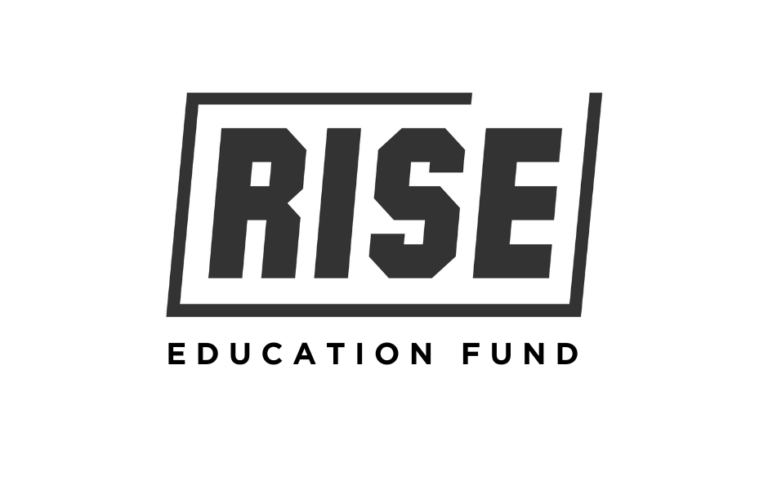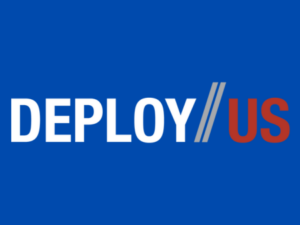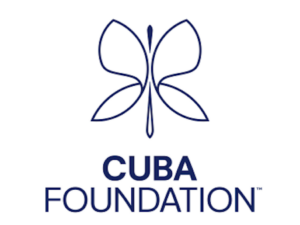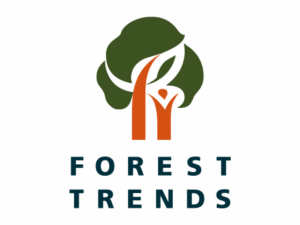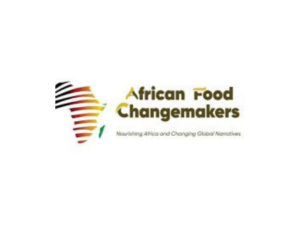Rise trains young people to use their voices and lived experiences to build students’ political power and make college more affordable. From free college advocacy to youth voter mobilization to civic engagement training, Rise invests in students to create a better future.
Mary-Pat Hector of Rise spoke with Ashley Hopkinson on November 16, 2023. Click here to read the full conversation with insights highlighted.
Ashley Hopkinson: Hi, I am Ashley Hopkinson. I’m an independent journalist and editor and manager of the Solutions Insights Lab. Could you please introduce yourself and the problem that Rise is trying to solve?
Mary-Pat Hector: My name is Mary-Pat Hector. I serve as the CEO of Rise. I am not the founder of the org. Our previous CEO, Max, was the founder of the organization. I got involved in the organization because of its mission, which was to address the high cost of attending college in this country, as well as addressing issues that directly impact students while on campus, such as student hunger, student houselessness, and other issues that students face, which was an issue that I was directly facing while at Spelman College. At Spellman, we had an opportunity to lead a hunger strike, which is how I got involved in the organization.
Rise was founded in 2017 by a group of students because they realized that there was a space where young people could gather if they wanted to organize around climate justice on campus. They knew that there was a place for students who wanted to gather and organize around gun violence and gun violence prevention on campuses.
But is there a space or is there an organization led by students to advocate around the rising cost of tuition, to advocate for housing and food access on college campuses? Those spaces and those conversations were happening, but those conversations were had by the administration, by presidents, by faculty and staff. There was no space where students could convene on campuses to advocate for themselves and go against the administration or even fight for federal and state policy. So that’s what Rise does.
We do that in two ways. We train and activate and teach students about how they can organize and be their own advocates on campus, and we also build youth and student political power because we know we can advocate and make noise around issues every single day. Those things are great, but how are we influencing policy? How are we electing people who want to see college affordability or even debt forgiveness at the state or federal level? So that’s a little bit about the organization.
Ashley Hopkinson: Who does Rise serve and how do you engage with them?
Mary-Pat Hector: Over 75% of our students are students of color. Over half of them are first generation students. Many of them, more than half of them, have experienced houselessness or student hunger while on campus. 95% of them deal with college affordability and the lack of resources to be able to afford college in general. And so those are the individuals that we serve, about 250,000 students across the country.
Ashley Hopkinson: What do you think makes the work that Rise is doing distinctive? What do you think stands out about the organization and the work that you all are doing in the community?
Mary-Pat Hector: It would definitely have to be how we reach young voters and also our mission and our morals. Most student and youth-led organizations are voluntary. When you’re asking students to engage in advocacy or training or fellowship programs, you pay them little to nothing or you believe that they should do it for free because it gives them experience. But every student that comes in contact with the organization is a paid organizer, which is extremely important.
And again, most of our students deal with food insecurity, housing insecurity, and so while they want to commit to doing great work, they cannot afford to do that because they’re already full-time students, they’re parents, they are working part-time jobs. We want to ensure that they can do the great work that they want to do while also being able to feed and house themselves. So they’re paid.
Beyond that, we take more of a relational approach to our organizing. I think most of the time when people think about mobilizing young people specific to Gen Z, it’s like, “okay, how do we pay influencers or how do we invest in this cool Instagram program or just focusing on TikTok?” But our student organizers on the ground are what we call trusted messengers. They’re the ones mobilizing their community to advocate or care about issues that directly impact them. They’re the ones going into their communities, registering voters, supporting them, and making voter plans, getting them to the polls, and they’re the ones reaching out to every person that they touch going into an election cycle at least three times through a personal phone call or a text message.
I think those are the things that are a little bit unique to us because we don’t do traditional robocalls, we don’t do robotext, we don’t utilize AI to do those things like most organizations do. We believe in the power of the human and we believe in the power of young people and their voices and the fact that they are trusted messengers within the communities that they serve every day.
Ashley Hopkinson: Define young people for me. What is the age range? I know you mentioned college campuses, is it happening in high schools as well?
Mary-Pat Hector: For our organization, our focus in age range is between the ages of 18 and 29. And I think there’s this misconception that, and we’ve actually had college students over the age of 29, but I think there’s this misconception that college students are 17 and 20 year olds, but that cannot be any further truth. The average college student in America is between the ages of 24 and 26 years old.
They’re parents, they work part-time or full-time jobs, and they’re the ones dealing with college affordability issues, hunger and homelessness. So we see young people that we mobilize between the ages of 18 and 29. But I think it’s important to note that the average typical college student is not your 17 or 20-year-old. They’re 24, 26 years old. That’s who our target market is, and that’s who we’re mobilizing.
Ashley Hopkinson: I appreciate you making that distinction. Can you give me an example that illustrates the impact of your work?
Mary-Pat Hector: I think about Wisconsin a lot during their Supreme Court race. Our team out of Wisconsin is actually run by a former fellow of Rise. She was making about $15 to $20 an hour as a student organizer and fellow while going to the University of Wisconsin-Madison. She had to drop out of college because of the affordability and the fact that her mom got ill. She had to decide, “am I going to work two to three jobs to take care of my family and my siblings and my mom, or am I going to get this college education?” She ended up dropping out of school, but she had an opportunity to continue to mobilize students around Wisconsin to fight for college affordability. And they ended up winning free college in Wisconsin due to the Wisconsin Promise.
But beyond that, she had an opportunity to continue to mobilize student voters on that same campus that she couldn’t afford to go to anymore. During the previous race, they saw about five students cast their ballots. And in that same precinct, due to her organizing on that campus all across Wisconsin, they saw over 500 students cast their ballot. So when I think about the power of young people and the fact that they can lead and do amazing and transformative work, and they should be at the center of the work in which they’re leading, I think about Erin and I think about our team out of Wisconsin.
Ashley Hopkinson: That’s incredible. What is a teachable lesson you think can be taken from the work that you’ve done that someone can learn from?
Mary-Pat Hector: I’d have to say that age doesn’t always equal experience. I think oftentimes we see young people as individuals that could just be interns in our programs or just be the token young person on our team to get ideas from. But I think what this work has shown me is that young people can lead organizations, they can raise dollars.They could truly make an impact.
Skoll and Freethink actually just did a mini docuseries with myself, Rise and the Alliance for Youth Action. And it was debunking the myth that young people don’t vote. There’s this myth that young people don’t care. But that cannot be any further than the truth. Young people have been saving our democracy and showing up in a way that we need them to because without them and their voices, I don’t know where we would be as a country right now.
Young people can lead. Young people have a voice. It’s not that they don’t care, it’s that they believe in holding people accountable. And I do believe we’ll see that accountability in 2024, but young people can care and we should trust them.
Ashley Hopkinson: If you were to give advice to someone who is starting an organization around organizing, particularly youth-led organizing work, what would be some advice you would give to them?
Mary-Pat Hector: It would have to be find your community. For the first time in this role as CEO, I’ve always been an organizer, but when you lead an organization and there are hundreds and thousands of people that depend on you to run programs, it’s really important to find your community and find your tribe so that you’re not making errors that you didn’t have to because those mistakes have already been made.
Any young person who’s starting an organization, I’m like, “yeah, you can call me”. But it’s also important to find that community and find that tribe, because there are things that I know or that I’ve experienced or that I’ve gone through that I’d want the next young Mary Pat to not have to deal with or experience. To show her how to navigate those things. Finding your community is extremely important.
What’s so interesting is I have not been able to find a community of young black women led organizations throughout my transition in this role. I think finding the few that are out there – I found two or three of them. So finding the few that are out there are extremely important. And another thing that I would say is, [to find community] not just in this space, but also in the funder space, that is also important. When I think about women that have seeded into me as a leader of a nonprofit, finding young women of color who are leading portfolios at different philanthropic organizations has also been very supportive and helpful. Noting, this is what funders are looking for or this is how you push this project, or this is how you update your funders. That’s also been extremely helpful for me.
So really finding that community and tapping into it, and also tapping into your already existing network. Don’t forget about the organizers on the ground. And remember that’s where you started from. That’s what keeps me going every single day.
Ashley Hopkinson: How would you say you measure success? What evidence do you have that the work that you’re doing through Rise is making the progress that you want it to make?
Mary-Pat Hector: It shows up in how many. It’s always the numbers, how many voters we were able to actually get to vote in 2022 and 2020 municipal races in places like Pennsylvania, or how many individuals we were able to touch. Those are the numbers that the funders or the people supporting our work would like to hear. We’ve had great success since 2018. We mobilized over a million voters going into 2024. We want to mobilize a million voters. In ‘22 alone, we mobilized 500,000. So we’re like, if that was not a presidential election, then we can mobilize a million voters. We can double that during a presidential election easily.
Those are the numbers. We also run some studies that show young people who were not contacted by Rise were not as likely to vote as young people who were reached out to by our student organizers at least three times going into election and having those personal conversations because young people are not even contacted by candidates or campaigns.
Only half of young people were even contacted in 2022. We’re doing the work that no one else is doing, and that’s what makes us so successful. I think the things that funders or people who care about those numbers don’t think about are the retention, the fact that students who come into our organization, they want to stay in our organization, they want to grow. I came into this organization as a student organizing fellow. I’m the CEO. Every state director that I have within my organization started where I started. We were all state directors together. We were all fellows together. We all came in as organizers together.
And so the retention within our organization, the fact that young people want to stay here and they want to grow within this organization, that’s success. The fact that many of the student organizers that I train through a program that I actually created called “Black the Vote”, while being an organizer within this organization, have gone to work for senators and gone to lead their own nonprofit organizations and work and build community with us, that looks like a measure of success to me.
And the fact that I can say in 2022, I was able to pay over 2000 students to do work that they actually cared about and make sure that they could eat while also making a difference within their community. That is a measure of success for me. None of them did that work for free. And I think a lot of people cannot say that. I know that that is a blessing, and I feel honored to be able to lead an organization that is able to do that work. That is a measure of success for me.
Going into 2025, knowing that, “okay, well, in ’22 we were able to have over 2000 organizers that were paid in ’24, I want over 5,000 organizers that are paid doing this work.” That is how I will measure success. Verses of course, “we were able to turn out this amount of voters.” That’s the impact that funders love to see. Those things are happening and we’re changing the world, but we’re also taking the lives of students and people who want to do this work but can’t because they can’t afford to.
I remember being the organizer who was making $250 a week, and I remember being the organizer who after college was on my mom’s sofa. I was out here marching and organizing, and now no one wants to give me a job. I remember being her. Now I’m a leader that’s able to ensure that organizers are paid a livable wage. My organizers are paid $20, $25 an hour. That’s a livable wage and they’re able to take care of their families.
That makes me happy because I remember not being in that position and wanting to ensure that they don’t have to go through the things that I went through. Literally being an organizer and just building them up professionally, ensuring that they know that even if you leave here, you’re given the tools to go and lead programs somewhere else. And connecting them with organizations like Skoll, maybe you want to go and be in the philanthropy space. Maybe you want to go and be in the policy space. What am I doing as a leader to put you in those rooms so that you can be the best you can be?
Ashley Hopkinson: What would you say are some challenges that you’re currently facing in the work and working to overcome? I don’t know if that’s scaling or accessibility or community buy-in. What would you say?
Mary-Pat Hector: I don’t necessarily believe that it’s the community or the scaling. I think it’s the demographic in which we serve. I think a lot of people just don’t see the importance of investing in young people, or they do in moments. It’s like you can’t just invest in young people during moments, right? Like 2020, I’m sure there was a lot of money thrown in the laps of young people and young organizations, but that didn’t last.
I grew up in some amazing youth led and youth centered organizations, but they’re not able to sustain themselves because a lot of people just don’t see the importance in them other than just these moments in time. And I’m like, we have to invest in young people. Young people deserve to be invested in 365 days a year and showing them that importance and showing them why it’s important that young people get paid for the work that they do. Every young person deserves to be paid a livable wage.
It’s important for us to invest in them, as they are not just our leaders of tomorrow, but also our leaders of today. If they don’t have the adequate training that they need, if they aren’t developing their professional skills now, then how are they ever going to? Or if we’re not involving them in the civic engagement space, if we’re not involving them in the social justice space and they see that that doesn’t just mean that you deserve to be paid $200. If they don’t know and see that this is a field in which they can work in, then we’ll be in really big trouble in 10 years.
So I think it’s really just conveying the fact that young people deserve to be invested in 365 days a year beyond these moments or two months before an election.
Ashley Hopkinson: Has there been something that you’ve tried that didn’t meet your expectations? And what did you learn from that?
Mary-Pat Hector: I’m still relatively new in my role, but when I think about things that we’ve tried that just didn’t necessarily go our way, I would have to say based off of slow funding in Q4, which is always hard in Q4 for many organizations, I tried the voluntary method. Let’s see how this works. And all our students were like, we love you all. Many of them supported where they could. It just didn’t work for who we serve, lower income individuals who had to choose between feeding their families and not. As a person of color in this role, failure is very scary where you feel like you can’t afford a mistake or where you feel like you can’t afford to mess up.
Oftentimes when I feel like we’re going in that direction, I will pick up my phone and I will call Melanie Campbell who leads the National Black Coalition on Civic Participation and say, “this is where I feel like I’m headed. How do we avoid going there?” Or I’ll call Helen Butler or I’ll call women who I know I can trust that won’t steer me down a path where I feel like I don’t want to be.
But I feel like we’re about six months in and I have not gone too far to where I feel like, “dang, this was not good. It didn’t go our way.” When I feel like we’re going there, I will immediately pick up the phone and I’ll call. And that’s why tribe is important, and finding that community is important, because they’ve been there, they know, and they’ll prevent you from making mistakes that they’ve probably made that you don’t have to.
Ashley Hopkinson: How do you feel like you’re working to advance systems level change in the world of organizing, specifically student and youth-led organizing? How are you moving the needle on these bigger structural issues that we’re facing?
Mary-Pat Hector: The first thing I think about is our Coalition for Debt Relief, where we’ve been fighting and advocating for debt relief for years. We had the opportunity over the course of the past two years to be in conversation with the administration on ways in which they planned on providing relief. We pushed very hard during the Presidentials in 2020 to put debt relief and free college on the agenda. And they made the agenda, but neither really made it through.
I think about the different organizations that we have present within our coalition and the different tactics. I always use Martin Luther King as an example because thinking Martin Luther King, Malcolm X, all of them were doing what they needed to do. I feel like they all knew if Malcolm is out here doing what he’s doing and Martin’s doing what he’s doing, Stokely’s doing, he’s like, if everyone’s playing their part, if it wasn’t for Malcolm, Martin would’ve never made it into the White House. Because the White House felt like, “okay, they’re all out here doing what they need to do, but Martin’s going to be the one in the White House solidifying the deal. Malcolm’s going to be the one outside making the noise, being like, y’all can’t talk to me. And the young people like Stokely and all that, they’re outside every day, all over the country doing what they need to do.”
Looking at our Coalition for Debt Relief, you had organizations that were very knowledgeable about what debt relief looks like. They knew the policies, they had the lawyers. Then you have the organizations who literally led thousands and thousands of college students. And then you have the organizations that might’ve known how to get the media’s attention. There were so many of us within this coalition. There were some that knew how to get to the White House. “You know what, this is how we can get the President on the phone, or this is how we could get a meeting.”
I felt everyone playing their part, doing what they needed to do was how we were able to get debt relief on the agenda as well as free college, and even get it to the Supreme Court. But unfortunately, it died in the Supreme Court. But the work still continues, and we still meet every single Thursday to figure out what our path is for relief. Realizing that you can’t do this stuff alone. Everyone plays an extremely important part, and in order for us to really see change, you’re going to need those different voices and those different perspectives and everybody actively playing their part in order for us to see change.
Ashley Hopkinson: What do you think is most needed from other partners or people who are working in similar spaces?
Mary-Pat Hector: Again I would just push for collaboration and partnership. I think oftentimes organizations fighting against these issues operate in a space of scarcity. And I’m like, “we don’t have to operate in a space of scarcity.” We can operate in a space of abundance because the world is abundant, and if we’re working together, then we can see the change that we want to see. But there has to be coordination amongst organizations and what they’re doing. There has to be collaboration, and there has to be an understanding that at the end of the day, this is the change that we want to see. And us coming together to figure out how we plan on doing that collectively.
If we’re only doing those things alone in our own silos and thinking about our own organizations and not the end or the end result, then we’re not going to get where we want. We’re not going to see the policy change that we want. We’re not going to see the engagement that we want to see. We have to work together.
Ashley Hopkinson: Where do you see Rise evolving over the next five years?
Mary-Pat Hector: I really want to see Rise as one of the largest student and youth centered organizations that’s building student political power. I want us to be one of the largest student mobilization organizations in the higher education space, and also in the democracy space. I want Rise to continue to be an organization where young people can go and develop professionally. And I also want to see us into a space where students who are dealing with college affordability aren’t able to just come here to get paid, but are also able to leave debt free. I want us to be able to be that organization. And we’ve done so much since 2017, but when I think about what we’re able to do in this short period of time, I believe that that could even be possible in the next six or seven years based on what we’ve been able to do so far.
Ashley Hopkinson: Wonderful. Thank you so much for talking with me today.
Click here to read the full conversation with insights highlighted.
Ashley Hopkinson is an award-winning journalist, newsroom entrepreneur and leader dedicated to excellent storytelling and mission-driven media. She currently manages the Solutions Insights Lab, an initiative of the Solutions Journalism Network. She is based in New Orleans, Louisiana.
* This interview has been edited and condensed.
Find other social change organizations working with students.

